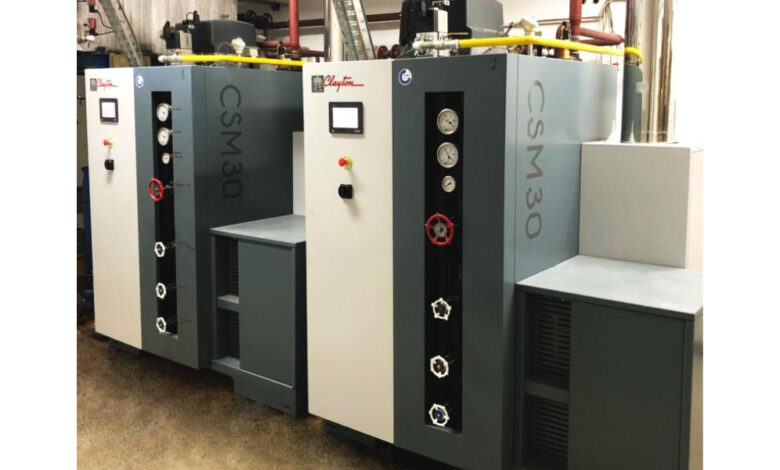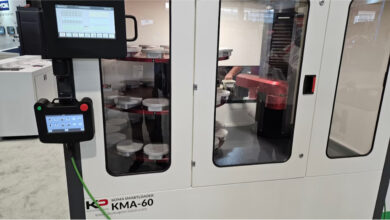Sustainable Heating and Steam Solutions: A Guide to Safe Industrial Equipment

As industries continue to evolve, there is an increasing emphasis on adopting sustainable heating and steam solutions. These solutions not only help reduce operational costs but also promote environmental responsibility by minimizing emissions and energy consumption. One critical component in these solutions is industrial boilers, which are essential in many industrial applications. This guide explores various sustainable heating methods, highlighting the importance of safe equipment and exploring key solutions, including industrial boilers and safe portable steam units.
Industrial Boilers: Essential for Sustainable Heating
Industrial boilers are a vital part of many manufacturing processes, providing the necessary steam for heating, power generation, and various industrial operations. When used effectively, they can be highly efficient, offering a cost-effective solution for large-scale heating needs. The modern industrial boiler has evolved, with many designs focused on maximizing fuel efficiency and reducing emissions.
Sustainable options for industrial boilers often incorporate advanced technologies such as condensing heat exchangers, which recover heat from flue gases, significantly improving energy efficiency. Additionally, some systems are designed to run on renewable fuels, like biomass or waste-to-energy products, offering a greener alternative to traditional fossil fuels. Regular maintenance and monitoring are essential to ensure that industrial boilers continue to operate safely and efficiently, minimizing energy waste and environmental impact.
Safe Portable Steam Unit: A Convenient and Sustainable Solution
Another key solution for industrial heating needs is the safe portable steam unit, which provides flexibility and mobility while maintaining high standards of safety. A Safe Portable Steam Unit is an excellent option for temporary heating or steam supply, especially in situations where space or infrastructure is limited. These units are often used for cleaning, sterilization, or even during shutdowns and maintenance, providing a quick and efficient steam solution.
A portable steam unit can be powered by electricity, gas, or even renewable energy sources, depending on the requirements. The emphasis on safety in portable steam units is paramount, as these systems are typically designed with pressure relief valves, temperature controls, and other safety mechanisms to prevent accidents. When used correctly, portable steam units are not only effective in delivering steam on demand but also contribute to reducing a facility’s carbon footprint by offering an energy-efficient and flexible solution.
Energy-Efficient Heat Recovery Systems
In addition to industrial boilers and portable steam units, energy-efficient heat recovery systems are becoming a crucial part of sustainable heating solutions. These systems capture waste heat produced by industrial processes, such as from exhaust gases or hot water, and repurpose it for use in heating or power generation. Heat recovery not only reduces energy consumption but also minimizes the need for additional heating resources.
For example, in industries that use steam extensively, a heat recovery steam generator (HRSG) can capture heat from the exhaust gases of gas turbines or boilers and use it to produce additional steam. This process significantly enhances the overall energy efficiency of industrial operations and reduces emissions. Implementing heat recovery systems requires a thorough understanding of the industrial process and equipment, ensuring that energy is recovered in the most efficient manner possible.
Solar and Geothermal Heating Solutions
As part of the growing trend toward sustainability, solar and geothermal heating solutions are being integrated into industrial facilities. Solar thermal systems, which use solar panels to heat water or air, can be a viable option for industries with significant heating needs. These systems are especially effective in regions with high sunlight exposure, where solar energy can be harnessed to offset traditional heating systems.
Geothermal heating, on the other hand, utilizes the Earth’s natural heat to provide heating for industrial operations. By tapping into underground reservoirs of thermal energy, geothermal systems offer a low-carbon solution for industrial heating needs. Though the initial installation of geothermal systems can be costly, they offer long-term sustainability and cost savings by reducing the reliance on fossil fuels and minimizing greenhouse gas emissions.
The Role of Insulation and Energy Management
In addition to investing in sustainable heating equipment, improving insulation and energy management practices is crucial for reducing overall energy consumption in industrial settings. Proper insulation of pipes, boilers, and other equipment helps maintain temperature stability and reduces energy loss, ensuring that heating systems operate more efficiently.
Energy management systems (EMS) also play an essential role in optimizing energy use across industrial facilities. These systems monitor and control energy consumption in real time, providing insights into areas where energy is being wasted and helping to identify opportunities for improvement. By integrating EMS with heating and steam systems, industries can achieve significant reductions in energy usage and associated costs.
Conclusion
Sustainable heating and steam solutions, including industrial boilers, safe portable steam units, heat recovery systems, and renewable energy technologies, are becoming increasingly important for industries looking to reduce their environmental impact and improve efficiency. By adopting these technologies, industrial facilities can achieve both operational sustainability and cost-effectiveness. However, maintaining safety standards and ensuring proper equipment operation are essential to achieving the desired results without compromising worker safety or equipment longevity.
Ultimately, integrating sustainable heating solutions, along with energy-efficient practices and equipment, is a smart investment that will lead to long-term benefits for both businesses and the environment.





